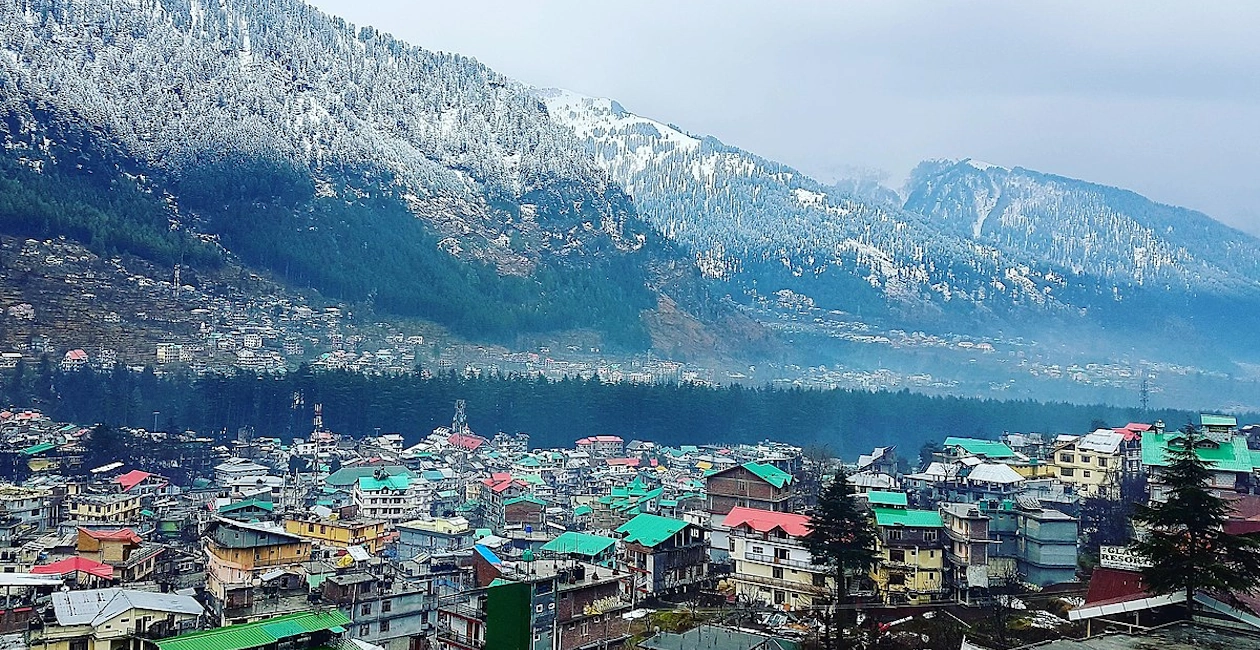Nestled in the Kullu Valley of Himachal Pradesh, India, Manali is a picturesque hill station that has captivated the hearts of travelers for decades. Known for its stunning landscapes, adventure sports, and vibrant culture, Manali is a year-round destination that offers something for everyone. Its blend of natural beauty, rich history, and cultural heritage makes it one of India’s most sought-after tourist spots.
Natural Beauty
Manali is situated at an altitude of about 2,050 meters (6,726 feet) above sea level, offering breathtaking views of snow-capped mountains, lush green valleys, and sparkling rivers. The Beas River flows through the town, adding to its scenic charm. The Solang Valley, located about 13 kilometers from Manali, is famous for its panoramic views and is a hotspot for adventure sports such as paragliding, zorbing, and skiing.
Another natural wonder near Manali is the Rohtang Pass, which connects the Kullu Valley with the Lahaul and Spiti Valleys. At an elevation of 3,978 meters (13,051 feet), the pass is covered with snow for most of the year and offers spectacular views of the surrounding peaks. It is a popular destination for tourists looking to experience snow even in the summer months.
Adventure Activities
Manali is an adventure lover’s paradise. The region offers a plethora of activities that cater to all levels of thrill-seekers. Trekking is one of the most popular activities, with numerous trails leading to beautiful destinations like the Hampta Pass, Beas Kund, and Bhrigu Lake. These treks offer a mix of scenic beauty, challenging terrains, and an opportunity to experience the local culture.
For those who enjoy water sports, white-water rafting on the Beas River is a thrilling experience. The river’s rapids provide an exciting challenge for both beginners and experienced rafters. During the winter months, skiing and snowboarding are popular activities in the Solang Valley and Rohtang Pass areas.
Cultural Heritage
Manali is not just about natural beauty and adventure; it also has a rich cultural heritage. The town is dotted with ancient temples and monasteries that reflect the region’s spiritual significance. The Hadimba Devi Temple, built in 1553, is one of the most famous temples in Manali. Dedicated to Hadimba Devi, the wife of Bhima from the Indian epic Mahabharata, the temple is known for its unique architecture and beautiful surroundings.
Another significant temple is the Manu Temple, dedicated to the sage Manu, who is believed to be the creator of the human race in Hindu mythology. The temple is located in Old Manali and offers a peaceful atmosphere for visitors to reflect and meditate.
Manali is also home to several Tibetan monasteries, which add to the town’s spiritual ambiance. The Gadhan Thekchhokling Gompa and the Himalayan Nyingmapa Gompa are two prominent monasteries where visitors can learn about Tibetan culture and Buddhism.
Festivals and Events
Manali’s vibrant culture is showcased through its various festivals and events. The Doongri Forest Festival, also known as Hadimba Devi Fair, is a three-day event celebrated in May. It features local music, dance, and traditional sports, providing a glimpse into the region’s cultural heritage.
The Winter Carnival, held in January, is another major event in Manali. It includes cultural performances, adventure activities, and competitions, attracting tourists from all over the country. The festival is a great way to experience the local customs and traditions.
Wellness and Relaxation
For those seeking relaxation and rejuvenation, Manali offers several wellness retreats and spa centers. The natural hot water springs at Vashisht, located about 6 kilometers from Manali, are believed to have therapeutic properties. Visitors can take a dip in these springs to relax and unwind amidst nature.
Conclusion
Manali is a destination that has something for everyone. Whether you are an adventure enthusiast, a nature lover, a spiritual seeker, or someone looking to escape the hustle and bustle of city life, Manali offers a unique and enriching experience. Its stunning landscapes, rich cultural heritage, and wide range of activities make it a must-visit destination in the Himalayas.


0 Comment